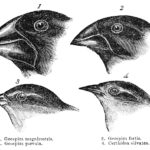Did you know that some animals have more senses than humans, while others have fewer senses? It’s true! Let’s explore some examples of how animals have adapted their senses to suit their needs and environments.
One animal that has more senses than humans is the sea turtle. Sea turtles are able to sense the Earth’s magnetic field, which helps them navigate across vast distances during their migration. This is an important adaptation that allows sea turtles to find their way home to their nesting grounds.
Arctic reindeer are another example of animals with more senses than humans. These animals are able to see ultraviolet (UV) light, which helps them find food and avoid predators in the snowy, icy environment of the Arctic.
Bats and dolphins are two more animals that have a heightened sense of hearing. Bats use echolocation, or sonar, to navigate and locate prey in the dark. Dolphins also use sonar to communicate with one another and to find food in the water.
Sharks are another animal with a highly developed sense of touch. Sharks can sense the electrical signals made by their prey, which helps them locate food in the water.
On the other hand, some animals have fewer senses than humans. For example, worms do not have the ability to see, hear, or smell. However, they do have sensitive touch receptors on their skin that help them navigate and find food.
Overall, it’s amazing to see the wide range of senses that different animals have adapted in order to survive and thrive in their environments. Whether they have more senses or fewer senses than humans, each animal has unique adaptations that help them interact with their surroundings in their own way.






